The Wright Brothers: A Centennial Tribute
by Dr. Bob Gardner
Department of Mathematics
Department of Physics, Astronomy and Geology
Institute of Mathematical and Physical Sciences
East Tennessee State University
GLIDER EXPERIMENTS
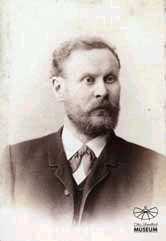
Otto Lilienthal, 1896
In 1895, the Wright Brothers read a paper by the German Otto Lilienthal concerning experiments with gliders. Lilienthal was "the father of gliding flight."
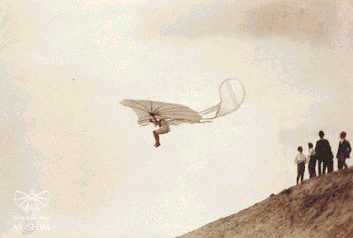
Otto Lilienthal, 1893
Sadly in the summer of 1896 his glider stalled and he fell 50 feet to his death. None-the-less, the brothers were inspired and tried to read all available material on Lilienthal's experiments, as well as those of other aviation pioneers. However, they had trouble finding a large variety of material.

 In a historic letter, Wilbur wrote the Smithsonian Institute in May 1899 to request material concerning human flight.
In a historic letter, Wilbur wrote the Smithsonian Institute in May 1899 to request material concerning human flight.

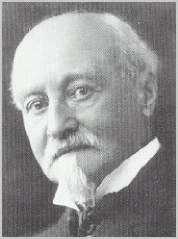
Langley in his "aerodrome", and Octave Chanute
He received a reply in June which suggested readings by Lilienthal, Samuel Langley, and Octave Chanute. After reading the material, the brothers realized that in spite of all the research done, little significant progress had been made towards solving the problem.
In terms of gliders, there are two engineering problems to address: producing leftwith the wings, and controlling the glider once it is in the air. Lilienthal had controlled his glider by shifting his weight, though he died in the process. Orville came up with the idea of varying the inclination of the wing tips in order to restore a glider to level flight.
The process is called wing warping and was a large part of the Wright's patent claim made some years later.

A Reproduction of the 1899 glider
To apply their ideas, the brothers made their first glider in August 1899. It was basically a biplane consisting of two five foot wings with an elevator at the rear.

Wing Warping with the 1899 glider
They attached strings to the tips of the wings which they then attached to sticks. By manipulating the sticks, they could warp the wings and cause the glider (which more properly should be called a kite) to rise up and dive down on command. The brothers were pleased with the outcomes of their experiments.
In December 1899, they wrote to the Weather Bureau in Washington D.C. to gather information on wind conditions at various places around the country. They also wrote Octave Chanute telling of their plans for experiments with a man-carrying kite and asking him for suggestions on locations to perform the experiments. Chanute suggested a coastal location and recommended southern California, Florida, and the Carolinas. Taking into consideration Chanute's information and the data from the Weather Bureau, they decided on a small coastal town relatively close to Dayton: Kitty Hawk, North Carolina.
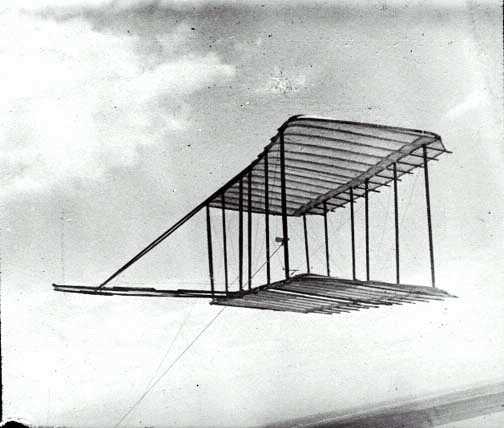
The 1900 Glider
In late summer of 1900, the brothers began construction of their 1900 glider. With an estimated expenditure of about $15, they built another biplane kite. This time the elevator was put at the front. The total lifting area was 165 square feet. They gathered materials in Dayton and completed construction at Kitty Hawk. They mostly flew the kite with about 50 pounds of chain aboard. They did get about 10 minutes of experience with a man aboard, but they also flew it as a glider, but for only a total of about 2 minutes. The wing warping and front elevator performed well. However, the lift which was expected was not realized.
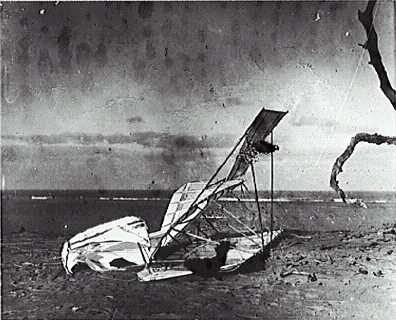
The 1900 Glider after a Crash
Lilienthal had produced state-of-the-art tables concerning lift. However, the Wright's experiments seemed to contradict the tables.

The 1901 Glider Flown as a Kite
For 1901, the Wrights set out to build the largest glider anyone had ever tried to fly. They constructed a biplane glider with 22 foot wings, a front elevator, a lifting area of 290 square feet, and a weight of about 98 pounds.
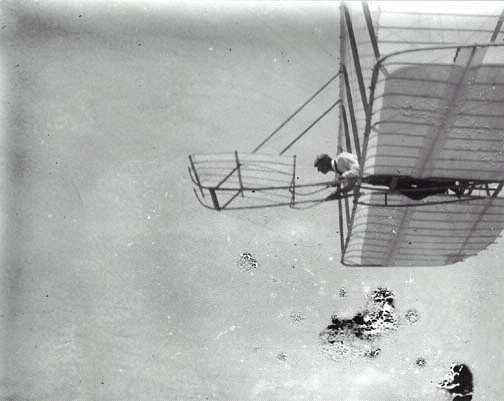
Wilbur in the 1901 Glider
The brothers built a shed near Kill Devil Hill where they made camp and stored the glider.

Camp and Hanger in 1903
The summer of 1901 was a difficult one and the brothers were plagued by mosquitoes and sand fleas. Though the Wrights broke all distance records for gliding, the overall results were disappointing to them.
Following the 1901 experiments, Wilbur is alleged to have claimed that "Not within a thousand years would man ever fly!" However, Octave Chanute had witnessed some of the gliding experiments that season and strongly encouraged the brothers to continue.
Somewhat frustrated, Orville made a small wind-tunnel in late 1901 (the first ever) in which he tested a number of shapes of wings.
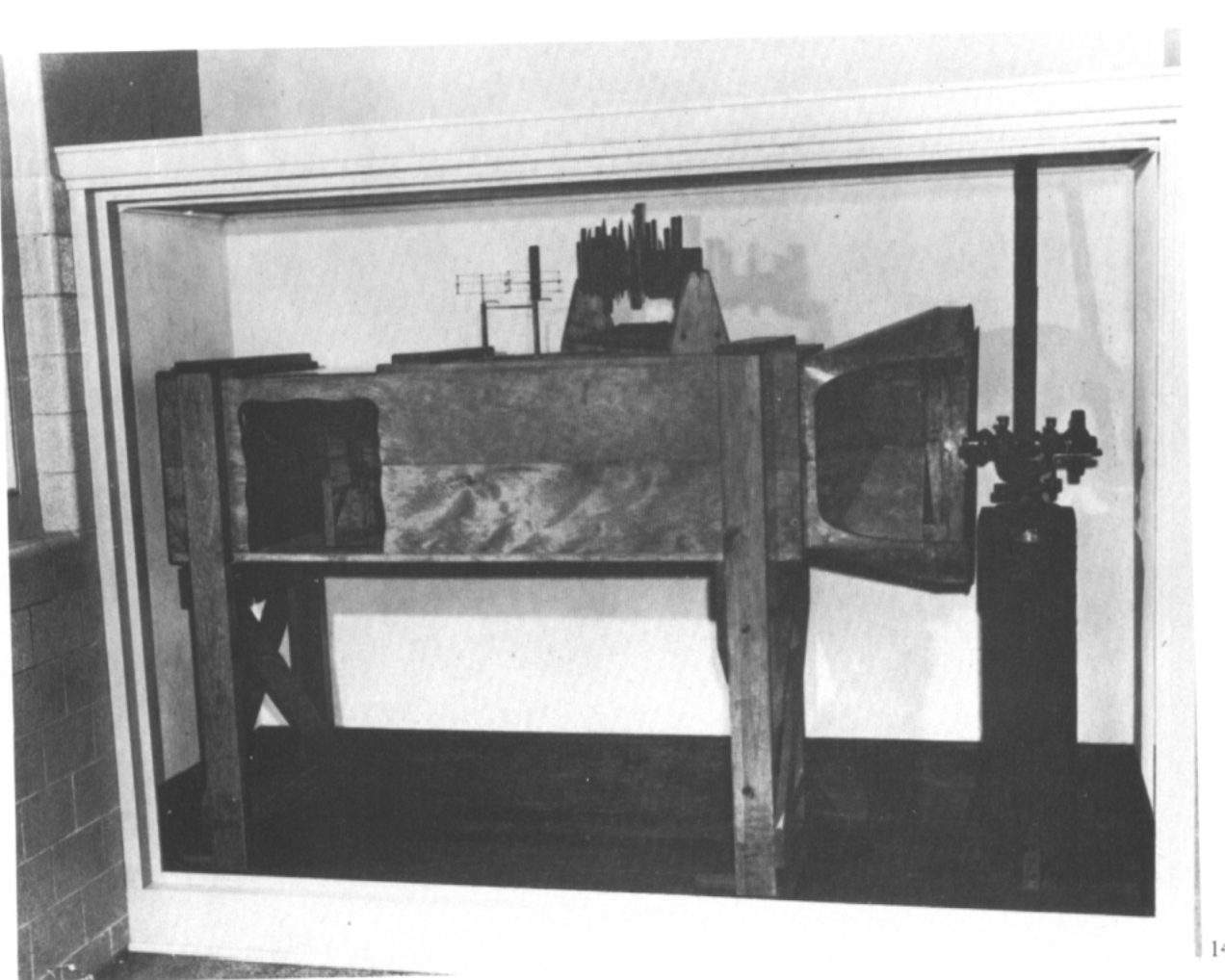
The Wright's Wind Tunnel
Initial success lead the brothers to build a larger wind-tunnel in which they tested more than 200 types of wings. The results of these laboratory experiments were to generate tables of lift values from which one might design an airplane that could fly. Additionally, their tables indicated that the accepted values of Lilienthal were inaccurate. These tables were, at the time, the Wright brothers greatest contribution to aviation. However, they wished to apply this data to an actual glider. This they did with great success in 1902.
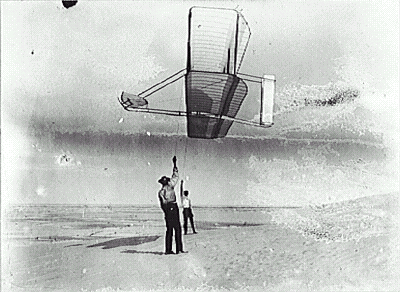
The 1902 Glider Flown as a Kite
The 1902 machine had roughly the same lifting area as the 1901 glider, but contained other modifications suggested by the wind-tunnel experiments. The most noticeable change was the addition of a vertical tail fin (giving the 1902 glider an appearance very similar to the 1903 flyer).
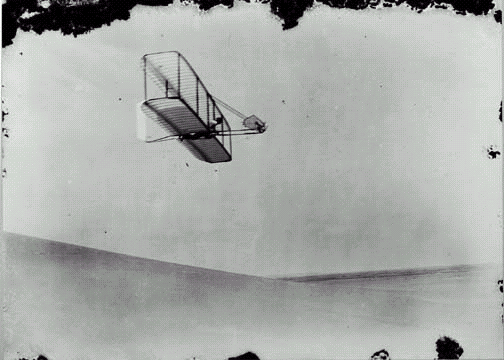
Wilbur in the 1902 Glider
During September and October 1902, the brothers made over a thousand gliding flights, some of them for a distance of over 600 feet.
The successes of the 1902 season gave the Wrights' the knowledge to address the two requirements for gliding flight: lift and control (though some modifications had to be made to optimize control).
But, for powered flight, they needed to solve a third problem: thrust, which would be provided by an engine.
Go to The First Flight section.
















